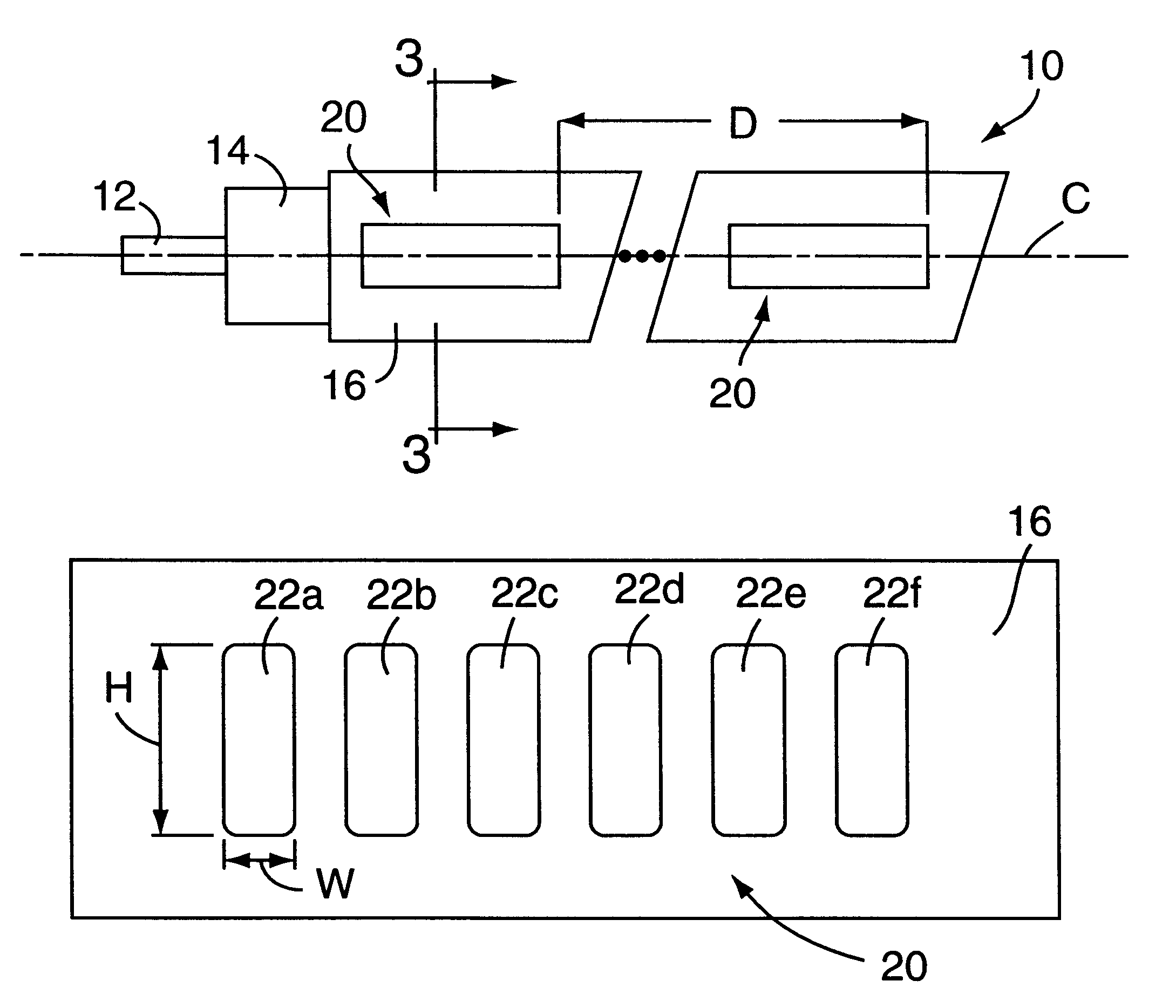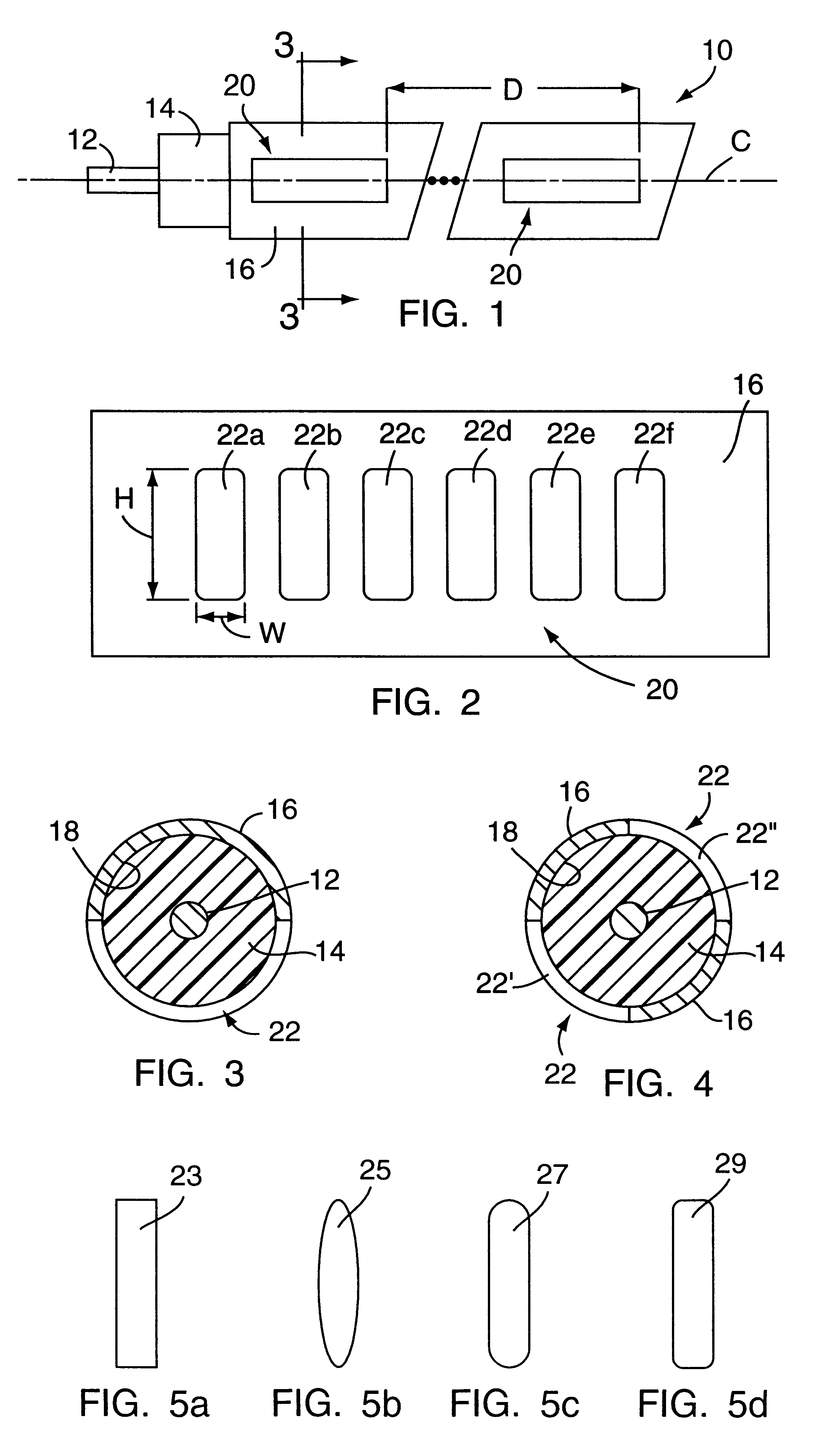Radiating coaxial cable having groups of spaced apertures for generating a surface wave at a low frequencies and a combination of surface and radiated waves at higher frequencies
a coaxial cable and surface wave technology, applied in waveguides, slot antennas, antennas, etc., can solve the problems of increasing the potential of water moving through the apertures and into the cable, increasing the insertion loss, and increasing the coupling loss. , to achieve the effect of minimizing the number of apertures, minimizing the potential of water moving through the apertures and low coupling loss
- Summary
- Abstract
- Description
- Claims
- Application Information
AI Technical Summary
Benefits of technology
Problems solved by technology
Method used
Image
Examples
Embodiment Construction
Radio frequency (RF) and microwave frequency electromagnetic waves are transmitted through a coaxial cable in the form of a transverse electromagnetic (TEM) wave. Groups of openings in the outer conductor are used to transfer energy to the outside of the cable. This energy forms mainly a surface wave (Goubau wave) for low operational frequencies (i.e., RF frequencies) and a combination of surface wave and radiated wave for high operational frequencies (i.e., microwave frequencies). The combination of surface wave and radiated wave at high operational frequencies substantially lowers the coupling loss, and does not limit the operational frequency bandwidth of the radiated coaxial cable.
With reference to FIGS. 1-5, a leaky / radiating coaxial cable embodying the present invention is generally designated by the reference number 10 (FIG. 1). For simplicity of illustration, the outer protective jacket of the coaxial cable 10 is not shown. The coaxial cable 10 comprises a solid or hollow in...
PUM
 Login to View More
Login to View More Abstract
Description
Claims
Application Information
 Login to View More
Login to View More - R&D
- Intellectual Property
- Life Sciences
- Materials
- Tech Scout
- Unparalleled Data Quality
- Higher Quality Content
- 60% Fewer Hallucinations
Browse by: Latest US Patents, China's latest patents, Technical Efficacy Thesaurus, Application Domain, Technology Topic, Popular Technical Reports.
© 2025 PatSnap. All rights reserved.Legal|Privacy policy|Modern Slavery Act Transparency Statement|Sitemap|About US| Contact US: help@patsnap.com



